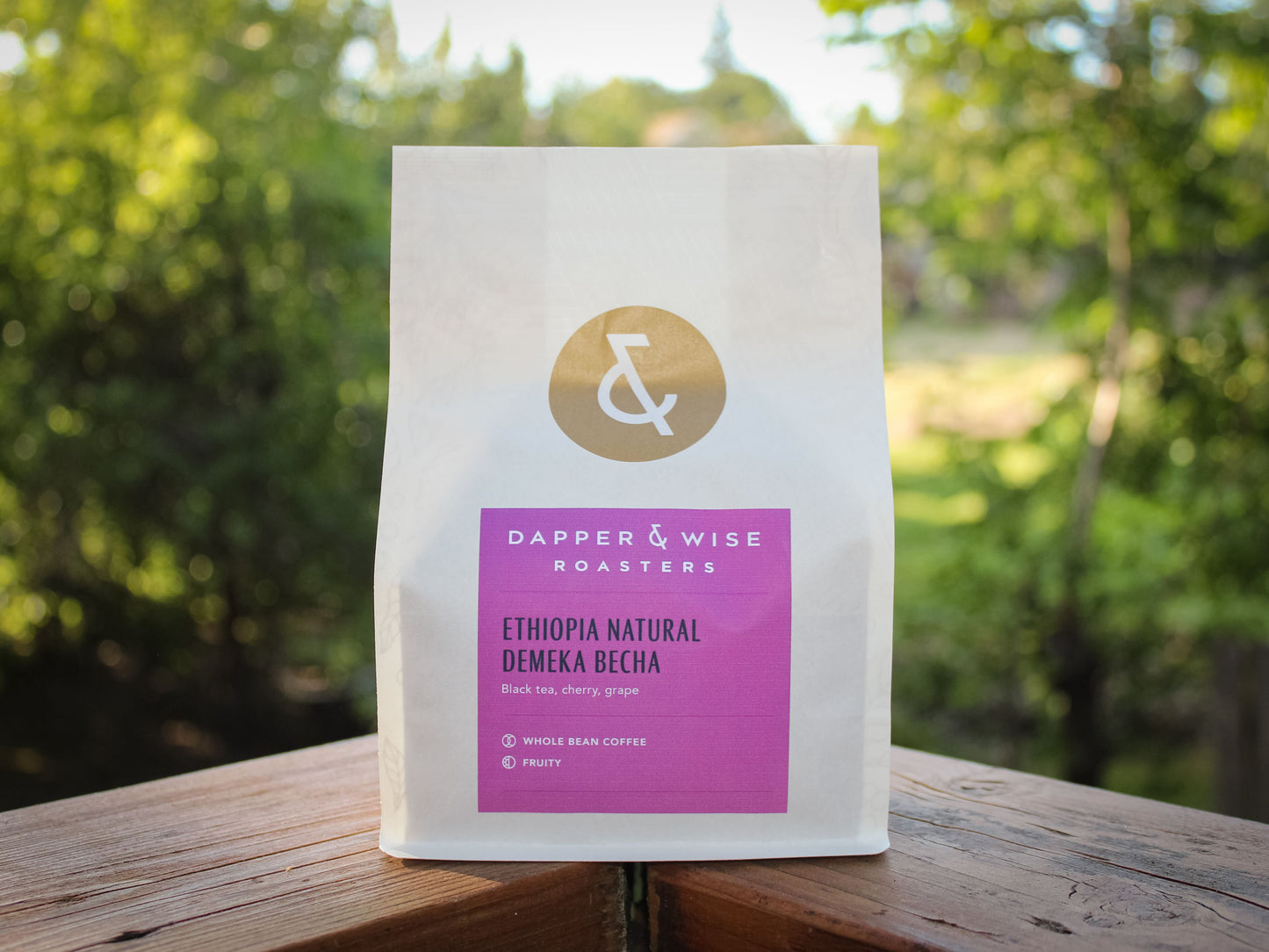
This is not the first time we’ve offered coffee from the Demeka Becha washing station. For those of you who have been following along with us (y’all are the best, btw), you might remember we’ve offered a couple iterations of their washed processed coffees in the past. With the launch of this natural process, we currently have both iterations available at the same time - a washed process and a natural process. Read on to learn a little bit about what makes these coffees taste so different from each other, and if you can swing it, grab a bag of each, brew them up side by side, and taste for yourself! (Something we do often at the D-dub roastery.)
We at DW label this new addition to our lineup as a natural process, however this lot undergoes one extra fun step that is not always part of the natural process. For context, here’s a brief breakdown of the most common coffee processing techniques, but to start, it might be helpful to know what the term ‘processing’ even refers to in the coffee world. In the most simple terms, think of processing as describing the form in which a coffee is dried, all beginning with the freshly picked coffee cherry. 'Form' meaning which layers have or have not been removed from the coffee cherry. Within the coffee cherry, under a layer of fruit pulp, mucilage, and a peanut shell-like parchment layer, you’ll find the seeds (we call them beans though..I guess ‘coffee bean’ sounds cooler than ‘coffee seed’?) Coffee needs to dry because it starts out as a fresh cherry, and in order to preserve quality, keep things food safe, and to decrease the weight so we’re not paying to transport unnecessary water from coffee farms to roasteries around the world, it's dried!
Consideration 1 - To ferment or not to ferment.
Consideration 2 - How many layers do we want to keep on for the drying process?
Fermentation plays a practical role - when you pulp a cherry (aka remove the fruit layer) you expose the sticky mucilage layer which is strongly attached to the parchment layer. If we want to dry the coffee without this mucilage layer, then fermentation allows the naturally occurring (but sometimes intentionally added) yeasts and bacteria to break down this layer so it can be easily washed away after some hours. Fermentation can also be used as a tool to influence the resulting taste of the coffee (similar but very different to how we can roast coffee in a variety of ways to affect the resulting flavor.) Fermentation naturally occurs as soon as yeast and bacteria make contact with the coffee cherry’s sugary pulp. So, while a coffee can be intentionally fermented in a more controlled environment, it’s likely also fermenting on its own, to some degree, as soon as it’s picked from the tree. We’re getting ahead of ourselves.. That’s consideration 1. Consideration 2 is where we determine what form a coffee will dry in:
Washed process - Cherries are pulped, mucilage is removed (either via fermentation and/or with the help of a machine called a demucilager, and coffee is dried in its parchment form.
Natural - Cherries are picked, and dried in cherry form!
Honey - Cherries are pulped, mucilage stays on, and they’re dried in their parchment layer with the mucilage still intact. If you happen to want to put this in terms that the 19th Century German philosopher Georg Wilhelm Friedrich Hegel would understand, the honey process is the ‘synthesis’ between the washed and the natural, however whichever is the ‘thesis’ and ‘antithesis’ is up for debate..
No matter the process, you end up with either dried parchment (with or without a lil layer of dried mucilage) or dried cherries. (Except for wet-hulled coffees, but that’s a topic for another time.) Once at a good moisture content, the dried parchment or cherry husks are sent to the dry mill to remove everything from the coffee seed, or as we like to call it, coffee bean.
So - all that to say, this coffee from the Demeka Becha site in Ethiopia is a natural process, but includes a fun step in which the cherries are fermented in sealed barrels before being dried in cherry form. Why did they do this to this coffee? Good question. Why choose one type of process over the other? Also a good question - I’m glad that I’m asking myself all the good questions. In many cases, the way that a coffee is processed is influenced by the local traditions/ways of doing things, and the resources available. Washed process coffees require more water and infrastructure than naturals, for instance. In this particular case, this was an intentional step in order to influence the flavor profile of the resulting cup of coffee. According to the folks who processed this lot, this extra fermentation step can intensify the sweetness and fruity notes in a coffee. Do you believe it? Give it a try with us, and you be the judge!
There will be no test on this, but we hope that you learned a little bit more about what goes on behind the scenes of your morning mug!
